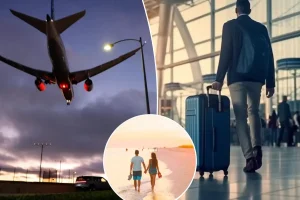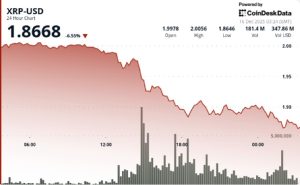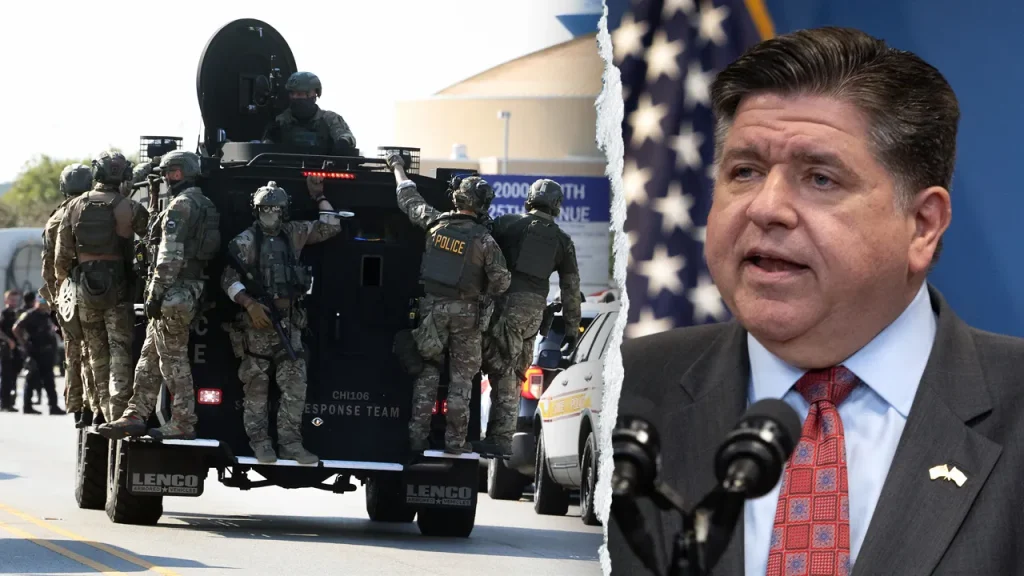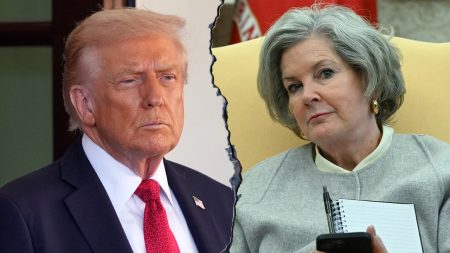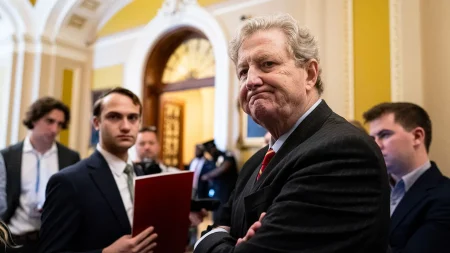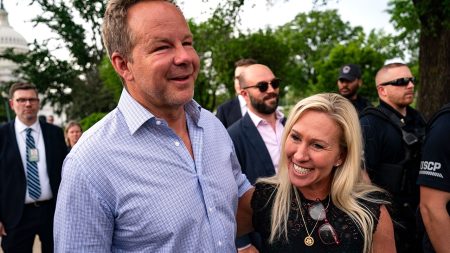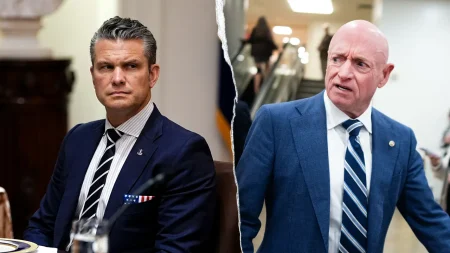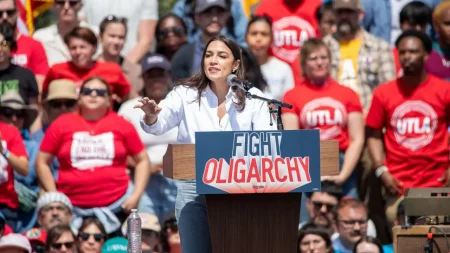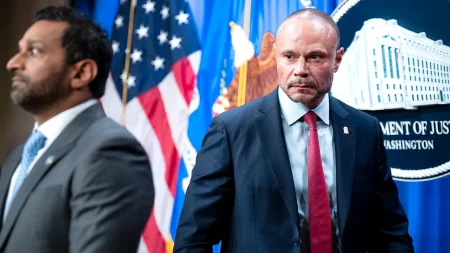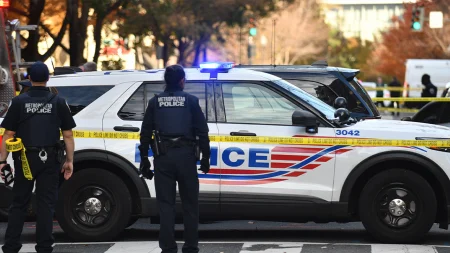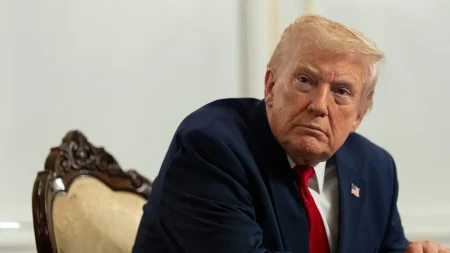Federal-State Clash: DHS Disputes Illinois Governor’s Claims About Law Enforcement Operations in Chicago
In a heated exchange of accusations, the Department of Homeland Security (DHS) has strongly rebuked Illinois Governor JB Pritzker, claiming he presented a “smorgasbord of lies” regarding federal law enforcement activities in Chicago. This conflict emerged after Governor Pritzker and Chicago Mayor Brandon Johnson filed a lawsuit to prevent the Trump administration from deploying National Guard troops from Illinois and Texas to Chicago. DHS Assistant Secretary Tricia McLaughlin didn’t mince words, challenging the governor to “get out of your mansion and see Chicago,” suggesting that Pritzker would witness “domestic terrorists and violent rioters attacking police officers” if he did. The department defended its operations, stating they were setting the record straight and protecting the reputation of Immigration and Customs Enforcement (ICE) and Customs and Border Protection (CBP) personnel from what they characterized as “smears and slander.”
The conflict centers around several specific claims made by Governor Pritzker during a press conference where he described an “unconstitutional invasion of Illinois by the federal government.” He accused federal agents of causing “violence and chaos” in Chicago. DHS countered that the president has constitutional authority to deploy troops to defend federal facilities under attack, specifically mentioning the ICE facility in Broadview. Another contentious point involved a raid in Chicago’s South Shore neighborhood. Pritzker claimed that U.S. citizens were being detained and arrested, describing an incident where 130 people were removed from a building while agents “broke windows, broke down doors, and ransacked the place” in pursuit of “a few gang members.” The DHS presented a starkly different account, stating that the operation targeted specific individuals and resulted in the arrest of 37 illegal immigrants, including members of the Tren de Aragua gang and violent criminals from various countries including Venezuela, Mexico, Colombia, and Nigeria. They emphatically denied targeting U.S. citizens.
Further disagreements arose over a fatal incident involving ICE agents. Pritzker mentioned the killing of Silverio Villegas-Gonzalez in Franklin Park, describing him as someone who “had just dropped his kids off at a daycare and was headed to work.” DHS provided a dramatically different narrative, describing Villegas-Gonzalez as “an illegal alien” who drove his car at officers after being ordered to stop, dragging one officer “a significant distance” before the officer fired his weapon in self-defense. They noted that despite being injured, the officer and his partner immediately administered emergency medical care. The department also characterized Villegas-Gonzalez as “a criminal illegal alien with a history of reckless driving,” directly contradicting the governor’s portrayal of the incident.
The dispute extended to the nature of protests in Broadview, a suburban village with a population of 8,000. Pritzker claimed federal agents had “turned two blocks of protest areas into a warzone by firing tear gas and chemical agents at peaceful protesters.” DHS strongly rejected this characterization, describing the protesters as “rioters” and “domestic terrorists” who had “rammed federal agents with their vehicles.” They specifically mentioned one woman, Marimar Martinez, who they claimed was armed with a semi-automatic weapon and had a history of doxxing federal agents. According to DHS, she “took defensive fire” from agents and was later taken into FBI custody after being discharged from the hospital. They also named another individual, Anthony Ian Santos Ruiz, as having been apprehended for his involvement in ramming law enforcement vehicles.
Governor Pritzker’s accusations continued with claims that “peaceful protesters have been hit with tear gas and shot with rubber bullets,” and that “journalists simply reporting the facts on the ground have been targeted and arrested.” He described a situation where “US citizens, including children, have been traumatized and detained,” characterizing these actions as part of a deliberate strategy to “cause chaos, create fear and confusion.” DHS responded by asserting that “the First Amendment protects speech and peaceful assembly — not rioting,” and claimed their officers were facing a “nearly 1000% increase in assaults” while attempting to arrest “murderers, rapists, and gang members.” They acknowledged the risks journalists face when covering such events but insisted their officers take “reasonable precautions” to protect those exercising First Amendment rights.
The final points of contention involved accusations of racial profiling and mistreatment of vulnerable populations. Pritzker claimed federal agents were “raiding neighborhoods” and “picking up people who are brown and black and then checking their credentials” rather than focusing on criminals. DHS categorically denied these allegations, calling them “disgusting, reckless, and FALSE.” They asserted that their targeting criteria involved immigration status, not race or ethnicity, and highlighted that their operations had resulted in over 1,000 arrests of individuals they described as “the worst of the worst pedophiles, child abusers, kidnappers, gang members, and armed robbers.” Regarding a viral claim that a toddler had been zip-tied during an operation, DHS stated this had been debunked as originating from a parody TikTok video where the supposed “officer” was actually the father of the child. This dispute exemplifies the deep political divisions surrounding immigration enforcement and the role of federal agencies in local jurisdictions, with both sides offering radically different interpretations of the same events.
